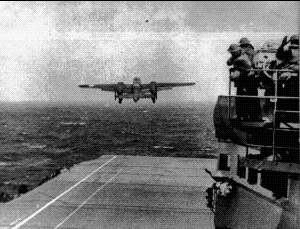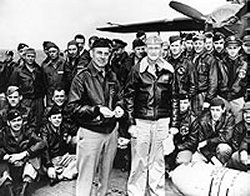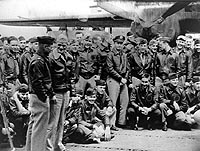 |
James Harold Doolittle was born in Alameda, California, USA in 1896. James "Jimmy" Doolittle was educated in Nome, Alaska, Los Angeles Junior College, and spent a year at the University of California School of Mines. He enlisted as a flying cadet in the Signal Corps Reserve in October 1917 and trained at the School of Military Aeronautics, University of California and Rockwell Field California. He was commissioned a second lieutenant in the Signal Corps' Aviation Section on the 11th of March 1918, and served successively at Camp Dick, Texas; Wright Field, Ohio; Gerstner Field, Louisiana; and went back to Rockwell Field, chiefly as a flight leader and gunnery instructor. He then went to Kelly Field, Texas, for duty first with the 104th Aero Squadron, and next with the 90th Squadron on border patrol duty at Eagle Pass, Texas. On the 1st of July 1920, Doolittle got his regular commission and promotion to first lieutenant. He then took the Air Service Mechanical School and Aeronautical Engineering courses at Kelly Field and McCook Field, Ohio, respectively. In September 1922 he made the first of many pioneering flights which earned him most of the major air trophies and international fame. He flew a DH-4, equipped with crude navigational instruments, in the first cross-country flight, from Pablo Beach, Florida, to San Diego, California, in 21 hours and 19 minutes. He made only one refuelling stop at Kelly Field. The military gave him the Distinguished Flying Cross for this historic feat. In the same year he received his bachelor of arts degree from the University of California. |




